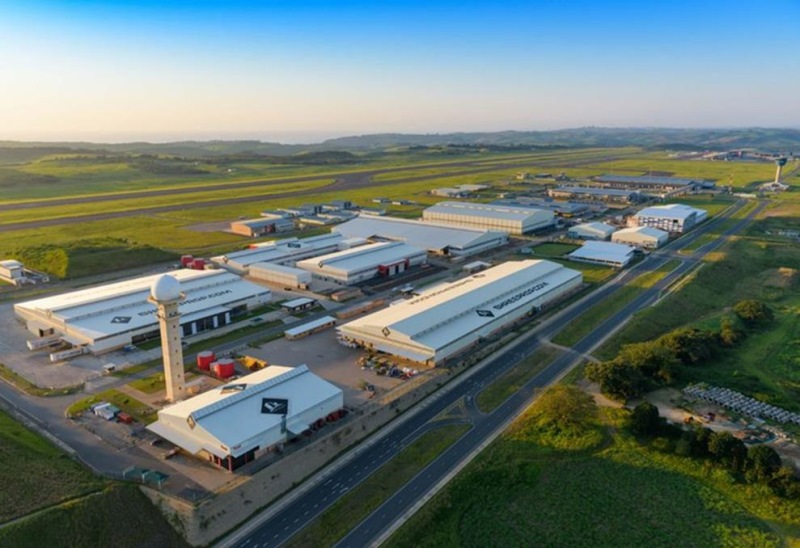A hub of economic activity
By definition, airports play a role in tourism, logistics and trade but the concept of an aerotropolis takes this further in finding ways to leverage the advantages that the facility brings to the region. The airport becomes a hub of economic activity in the same way that cities anchor different economic sectors that grow up around the centre.
Several South African airports and regions are using this thinking to underpin new approaches to economic planning.
OR Tambo International Airport is the biggest airport in Africa. The City of Ekurhuleni, where OR Tambo is located, is hoping to be the national centre for logistics and to boost its already impressive manufacturing capacity by building more infrastructure and freight hubs. It also wants the aerotropolis concept to play a role in helping to consolidate the integration of the nine town councils that went into making up the current metropole.
The Tambo Springs inland port and logistics gateway has been established near Katlehong as an inter-modal facility which can transfer containers from rail or road to storage facilities and ultimately to the customer. Existing freight rail lines run through the site and link it to the seaports of Durban, Cape Town and Ngqura (Port Elizabeth). The aim with this new facility is to improve efficiency. It is run by the Tambo Springs Development Company.
Logistics is obviously a major part of the equation and facilities such as the Tambo/Springs inland port will add capacity to the region. However, using closeness to the airport as a factor in driving down costs can also be a way of promoting manufacturing. When this factor is supported by national, provincial and local government incentives, the business proposition for investors becomes very attractive.
The OR Tambo Industrial Development Zone is one of several sites allocated by the South African government to stimulate investment in targeted sectors. The OR Tambo IDZ supports the development of businesses that work in the beneficiation of precious metals and minerals sector, with a focus on light, high-margin manufacturing of South African precious and semi-precious metals. Export is encouraged.
The National Department of Trade and Industry (the dti) is the lead agent in the creation of Special Economic Zones, which are part of the national Industrial Policy Action Plan (IPAP). SEZs are designed to attract investment, create jobs and boost exports. Industrial Development Zones are a type of SEZ.
Other important participants in building on the aerotropolis concept include Airports Company South Africa (ACSA), operator of nine of the country’s airports, Air Traffic Navigation Services (ATNS) and local and provincial governments and their agencies.
In the Free State, Bloemfontein is pursuing an Airport Node project within a broader N8 Corridor development scheme. A project covering 2 000 ha and expected to cost in the region of R100-billion over several phases has been initiated at the Bram Fischer International Airport.
A development plan for the area has designated five precincts: Terminal, Boulevard, General Aviation, Airport Industria and Grasslands. The Road Lodge Hotel was built within this conceptual plan. A range of land uses beyond the hotel are envisaged, including warehousing, hospital care, commercial, service stations, conferencing, retail, motor vehicle dealerships, car rental, logistics hub and a showground.
A major reason for the building of a new airport north of Durban was to stimulate cargo volumes, particularly in the agricultural sector. King Shaka International Airport (KSIA) and the nearby Dube TradePort are intended to complement one another, a good example of the aerotropolis idea. The opening of a R99-million cold-storage facility at Dube TradePort in 2017 gives farmers and exporters additional flexibility, allowing them to store chilled and frozen perishable goods.
Dube TradePort is a 3 000-hectare development that encompasses the airport and is ideally situated for any logistics business as it is very close to Africa’s busiest cargo port (at Durban) and 140 km from the deepest natural harbour in the southern hemisphere where the Port of Richards Bay and the Richards Bay Industrial Development Zone (RBIDZ) are located.
Dube TradePort is a Special Economic Zone and it encompasses a cargo terminal, a serviced industrial estate, 12 hectares of office, retail and hospitality space and an agri-zone for growing, packaging and distribution of high-value perishables and horticultural products.
The focus in Cape Town in recent years has been on growing the number of direct flights to the city. A record 10-million arrivals passed through the gates of Cape Town International Airport in 2016 as a result of a programme called Air Access. The next big thing at CTIA is going to be a new runway. Airport Industria is already a well-established commercial and industrial zone. With increased volumes into the airport, it likely to continue to grow. The re-aligned new runway will also open up new commercial opportunities. ACSA is looking to promote economic activity in the previously undeveloped Symphony Way area through site zoning. Commercial and logistics are the two most likely kind of activities suited to the newly targeted area.



